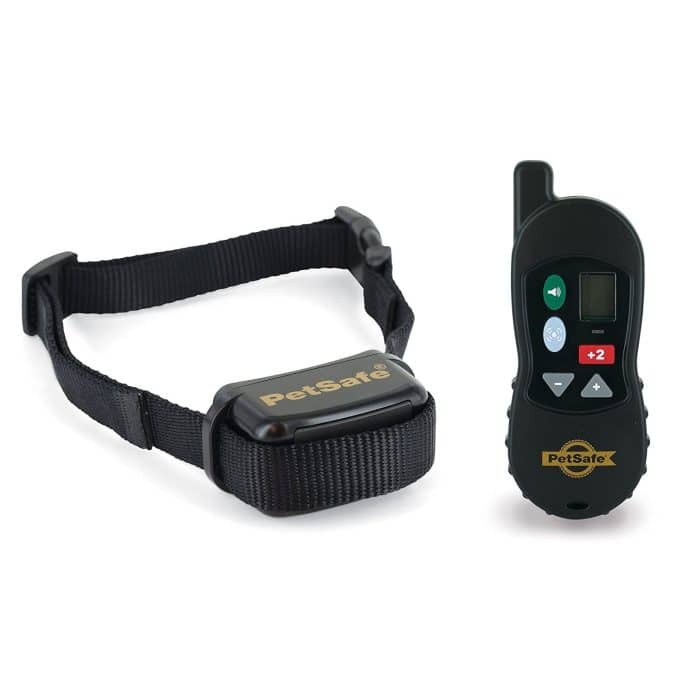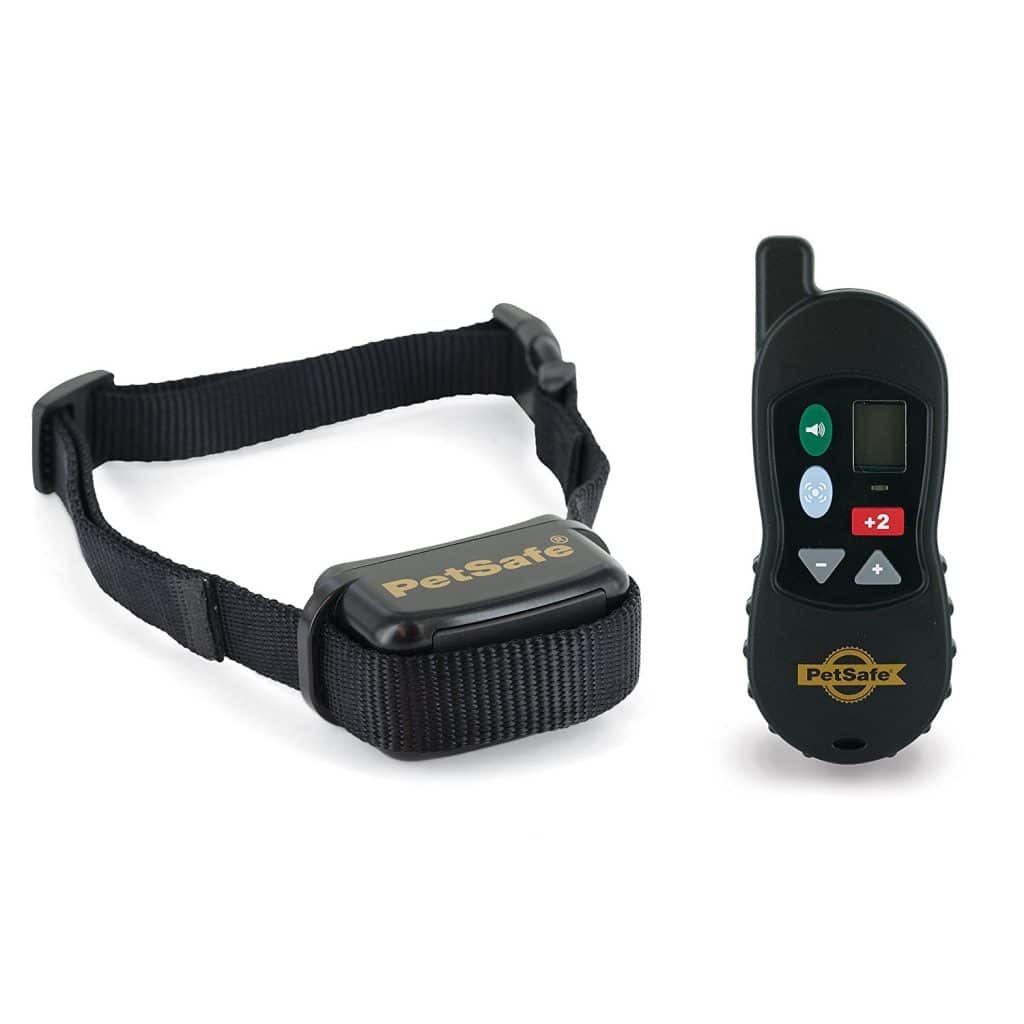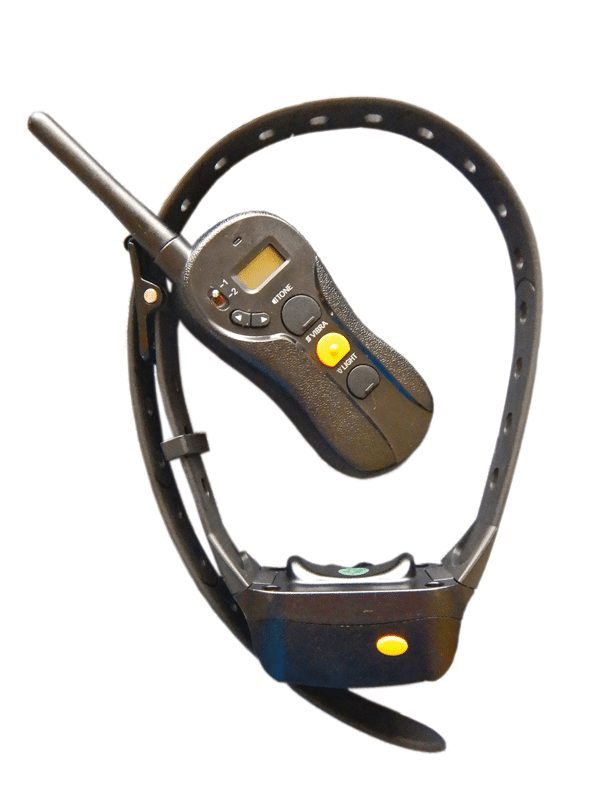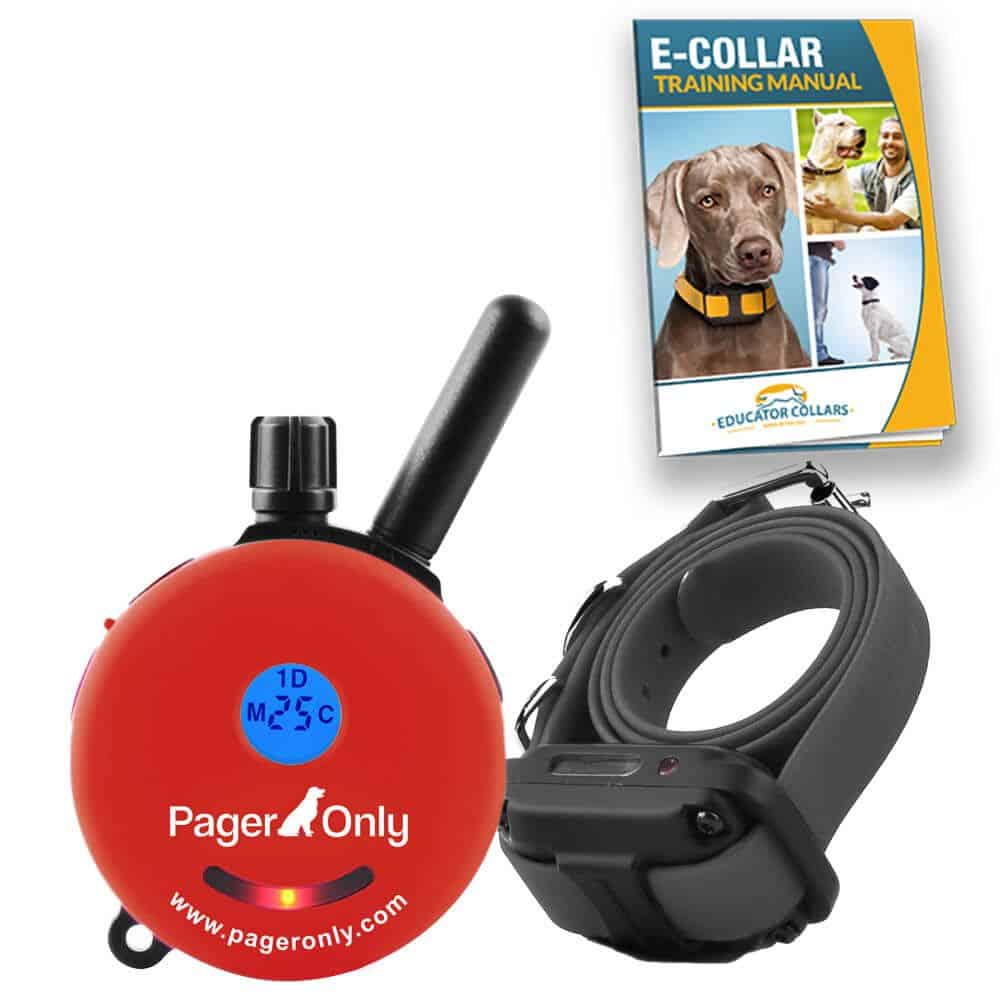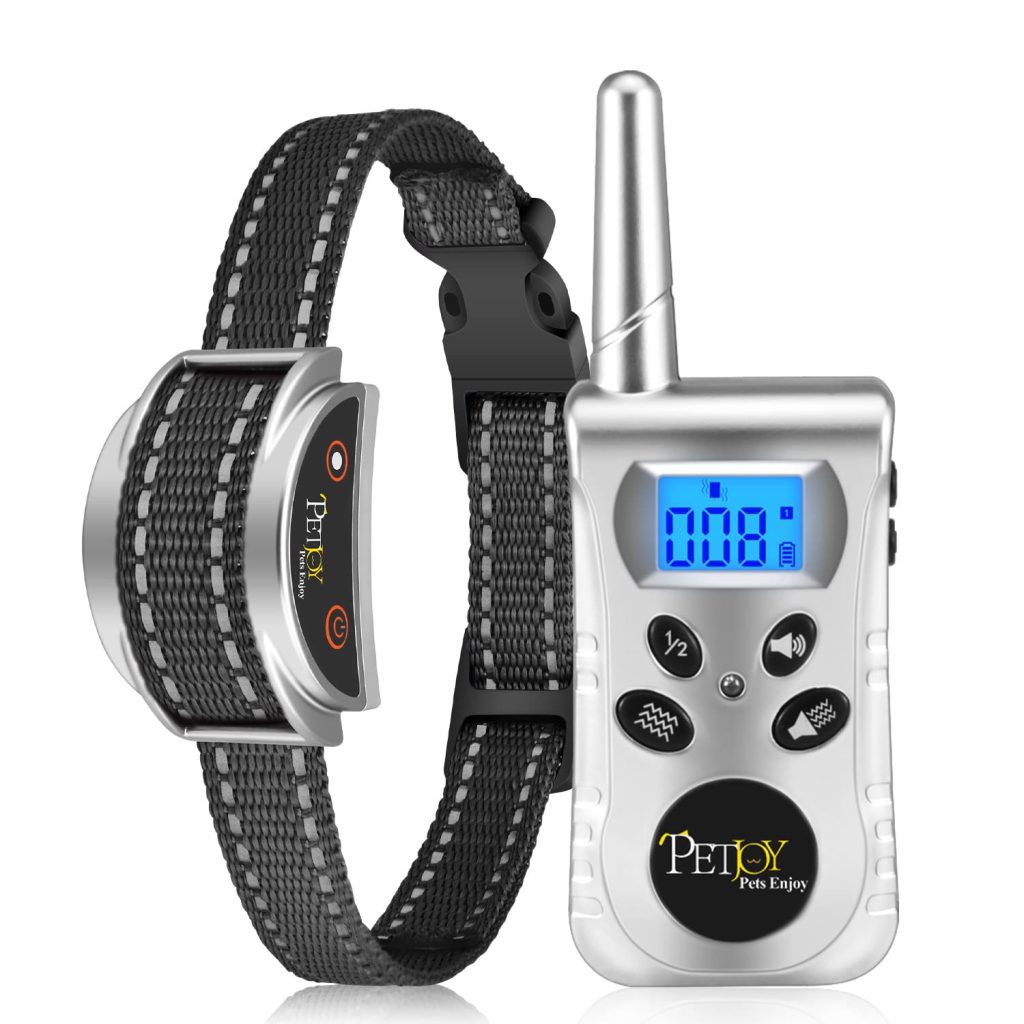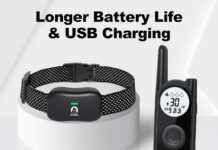In this article, we explore the effectiveness of vibration collars on dogs. Many pet owners wonder if these collars truly work in training their furry companions.
We will delve into the research and dissect experts’ opinions to clearly understand whether vibration collars are an effective tool for training dogs.
The Science Behind Vibration Collars
Vibration collars are becoming increasingly popular as a tool for training dogs. These collars are designed to emit a gentle vibrating sensation that serves as a form of communication between the dog and the owner. But how exactly do vibration collars work, and what is the science behind them?
Understanding Vibration Collars
Vibration collars work based on the principle of operant conditioning. They are designed to provide a controlled and consistent stimulus to the dog, which can be used to reinforce desired behaviors or discourage unwanted behaviors. The vibration sensation is typically mild and serves as a form of communication that catches the dog’s attention without causing pain or discomfort.
The collars are equipped with a small device that emits the vibration, which can be activated remotely by the owner or automatically in response to a specific behavior detected by the collar. This technology allows for precise timing and consistency in training, essential for effective communication with the dog.
How Vibration Collars Affect Dogs’ Behavior
Vibration collars can positively impact dogs’ behavior when used correctly and responsibly. The vibrating sensation serves as a neutral stimulus that can be associated with a specific behavior or command. When the dog understands this association, the vibration can reinforce the desired behavior or redirect the dog’s attention away from unwanted behaviors.
The vibration function of the collar can also be beneficial in situations where verbal or visual cues may not be effective. For example, a vibrating sensation in noisy or distraction-filled environments can cut through the clutter and capture the dog’s attention, allowing for better communication and training.
It’s important to note that vibration collars should never be used as a punishment tool. They are meant to aid positive reinforcement training, focusing on rewarding good behavior rather than punishing unwanted behavior.
Pros and Cons of Vibration Collars
There are several advantages to using vibration collars as a dog training tool. First and foremost, they provide a humane and gentle way to communicate with the dog without causing pain or fear. This is particularly important for sensitive or reactive dogs who may not respond well to more aversive training methods.
Vibration collars also offer a convenient and effective way to reinforce training, even from a distance. This can be especially useful when the dog needs to be off-leash or when the owner cannot physically reach the dog, such as during agility training or recall exercises.
However, it’s essential to recognize that vibration collars are not a one-size-fits-all solution. Some dogs may not respond well to the vibrating sensation, or the collar may not address certain behaviors effectively. As with any training method, it’s crucial to consider the individual dog’s temperament, learning style, and specific training needs.
Effectiveness of Vibration Collars
Now that we understand the science behind vibration collars, let’s delve into their effectiveness as a dog training tool.
Success Rate of Vibration Collars
The success rate of vibration collars ultimately depends on several factors, including the skill and consistency of the trainer, the specific behavior being addressed, and the individual dog’s responsiveness to the collar’s stimulation. When used correctly and in conjunction with positive reinforcement training, vibration collars can be highly effective in modifying and shaping a dog’s behavior.
Research studies have shown promising results regarding the effectiveness of vibration collars. A study by the Journal of Applied Animal Behavior Science found that vibrations, when paired with positive reinforcement, led to significant improvements in recall and response to dog commands.
It’s important to note that the success rate may vary from dog to dog, and specific behaviors may require additional training methods or professional guidance. The effectiveness of vibration collars should always be evaluated on a case-by-case basis.
Factors Affecting the Effectiveness of Vibration Collars
While vibration collars can be effective, various factors can influence their effectiveness. One significant factor is the consistency and timing of the vibrations. The vibrations must be delivered immediately, ideally within one second of the desired behavior or command, to communicate with the dog effectively. Consistency is vital to helping the dog understand the association between the vibration and the behavior.
Another crucial factor is the appropriate setting of the collar’s intensity level. Each dog may have a different sensitivity threshold, and it’s essential to find the right level that is effective without causing undue stress or discomfort to the dog. Starting with the lowest level and gradually increasing if necessary is generally recommended.
The training technique used alongside the vibration collar also significantly affects its effectiveness. Positive reinforcement training, where desired behaviors are rewarded with praise, treats, or play, is recommended. This approach helps create a positive association with the vibration and reinforces the desired behavior gently and encouragingly.
Comparing Vibration Collars to Other Training Methods
When choosing a training method for your dog, it’s essential to consider the various options available. Vibration collars offer a unique approach that falls somewhere between purely positive reinforcement training and more aversive methods, such as shock collars.
Compared to shock collars, vibration collars provide a gentler alternative that focuses on communication rather than punishment. The vibrating sensation is a neutral stimulus, while shock collars can cause discomfort or pain. Vibration collars are generally considered a more humane and ethical choice for training dogs.
However, it’s worth noting that vibration collars may not be as effective as more aversive methods in certain situations or with certain behaviors. For example, additional training methods or professional guidance may be necessary in cases of aggression or severe reactivity. It’s crucial to evaluate your dog’s specific needs and consult with a professional when in doubt.
This image is the property of deafdogsrock.com.
Choosing the Right Vibration Collar
Now that we have explored the effectiveness of vibration collars, let’s dive into the factors to consider when selecting a suitable collar for your dog.
Considerations for Selecting a Vibration Collar
Before purchasing a vibration collar, it’s essential to consider certain factors to ensure you choose a collar that meets your dog’s needs.
First and foremost, consider the size and weight of your dog. Vibration collars come in different sizes, and selecting one that fits comfortably and securely on your dog is crucial. An ill-fitting collar can be ineffective or even cause discomfort for your furry friend.
Next, think about the specific behaviors or training goals you are addressing. Different vibration collars offer varying features and modes of operation. Some collars focus solely on vibrations, while others include additional features such as sound, light, or even spray. Determine which features are essential for your training needs and look for collars that offer those options.
Types of Vibration Collars
There are a few different types of vibration collars available on the market, each with unique features and functionality.
Remote-Controlled Collars: These collars allow the owner to activate the vibrations using a handheld remote control manually. This type of collar provides more control and allows for training at a distance.
Automatic Collars: Automatic collars are designed to detect specific behaviors or triggers, such as excessive barking, and automatically emit vibrations in response. These collars can help address specific behaviors that occur when the owner is not present or cannot intervene manually.
Multi-Mode Collars: Some vibration collars offer multiple modes of operation, allowing you to switch between different forms of stimulation, such as vibration, sound, or light. These collars provide greater versatility and flexibility in training.
Features to Look for in a Vibration Collar
When choosing a vibration collar, certain features can enhance its effectiveness and suitability for your training needs.
Adjustable Intensity Levels: Look for a collar that offers adjustable intensity levels, allowing you to find the right level of vibration that is effective for your dog without causing discomfort.
Waterproof Design: Dogs are active animals who may come into contact with water, whether it’s during training sessions, playtime, or rainy walks. Opt for a vibration collar that is waterproof or at least water-resistant to ensure it remains functional and safe even in wet conditions.
Long Battery Life: Many vibration collars are battery-operated, so selecting a long battery life is essential. This ensures the collar remains functional throughout training sessions and doesn’t require frequent battery replacements.
Durable Construction: Dogs can be rough on their equipment, so choosing a vibration collar with a durable construction can ensure it withstands daily wear and tear and lasts for an extended period.
When selecting a vibration collar, it’s also a good idea to read reviews and consider recommendations from experienced trainers or other dog owners who have used the specific collar you are interested in. Their insights can provide valuable information and help you make an informed decision.
Training Techniques with Vibration Collars
Now that you have chosen a vibration collar for your dog let’s explore effective training techniques that can be used alongside the collar to maximize its benefits.
Positive Reinforcement Training with Vibration Collars
Positive reinforcement training is a highly effective and humane method that works incredibly well with vibration collars. This training technique involves rewarding desired behaviors with praise, treats, or play, encouraging the dog to repeat those behaviors.
When using a vibration collar, pairing the vibration with a reward can help the dog understand the association between the vibration and the desired behavior. For example, if you are training your dog to come when called, activate the vibration collar and provide a reward and praise as soon as your dog starts moving toward you. This reinforces the behavior and creates a positive association with the vibration.
Remember to be consistent and timely with your rewards. The reward should be given within seconds of the desired behavior and followed by positive reinforcement, even if the vibration was not used. This approach helps establish a strong reinforcement history and makes the vibration collar an effective tool.
Avoiding Negative Impact with Vibration Collars
While vibration collars are generally safe and humane, it’s crucial to be mindful of potential negative impacts and ensure the collar is used responsibly.
First and foremost, it’s essential to introduce the vibration collar gradually and allow the dog to acclimate to the sensation. Start using the collar without vibrations, allowing the dog to associate the collar with positive experiences, such as playtime or treats. This helps the dog build a positive association with the collar and prevents potential fear or anxiety.
Additionally, pay attention to your dog’s body language and behavior during training sessions. Stop using the collar immediately and reassess your training techniques if you notice signs of stress, fear, or discomfort. Each dog is unique, and respecting their limits and comfort levels is vital.
Proper Training Protocols with Vibration Collars
It’s essential to follow proper training protocols when using vibration collars to ensure optimal results and avoid any potential adverse effects.
Start by identifying the specific behavior you want to address or train. Break down the behavior into small, manageable steps and gradually work toward the desired outcome. Remember to be patient and consistent throughout the training process.
When introducing the vibration collar, start with the lowest intensity level and observe your dog’s response. If your dog shows no significant reaction, gradually increase the intensity until you find the level that effectively captures their attention without causing distress. It’s crucial to strike a balance between effectiveness and the well-being of your dog.
Additionally, pair the vibrations with clear commands or cues to help your dog understand what is expected of them. Be consistent with these commands and reinforce the desired behavior with rewards, even when the vibration collar is not used.
Lastly, practice short training sessions regularly rather than long, infrequent sessions. Dogs have limited attention spans, and frequent, brief sessions are more effective in promoting learning and retention.
This image is the property of s28489.pcdn.co.
Addressing Concerns about Vibration Collars
As with any training tool, addressing potential concerns and ethical considerations associated with vibration collars is essential.
Potential Side Effects of Vibration Collars
When used responsibly and humanely, vibration collars generally have minimal side effects. The mild vibrating sensation is unlikely to cause any physical harm or discomfort. However, it’s essential to monitor your dog’s response closely and discontinue use if any signs of distress, fear, or discomfort are observed.
It’s also important to recognize that each dog is unique, and some dogs may be more sensitive to the vibrations than others. If you have concerns about your dog’s reaction, consult a professional trainer or veterinarian to ensure the collar is correctly used and is appropriate for your dog.
Risk of Harm and Discomfort
When used incorrectly or irresponsibly, vibration collars can potentially cause harm or discomfort to dogs. This can occur if the collar is used as a punishment tool or if inappropriate intensity levels are used. It’s crucial always to prioritize the well-being of your dog and ensure the collar is used as a communication tool, focusing on positive reinforcement rather than punishment.
Regularly check the collar fit, ensuring it is not too tight or loose, as an ill-fitting collar can cause discomfort or chafing. Additionally, follow the manufacturer’s instructions for use and never exceed the recommended intensity levels.
Ethical Considerations with Vibration Collars
Using any training tool raises ethical considerations, and vibration collars are no exception. As responsible pet owners, it’s crucial to prioritize the well-being and happiness of our dogs while also addressing their training needs.
Before utilizing a vibration collar, it’s essential to consider whether other training methods, such as purely positive reinforcement, may be more appropriate for your dog’s specific needs. Each dog is unique; some dogs may respond better to different methods. Consulting with a professional trainer can provide valuable guidance and help ensure ethical training practices.
It’s also essential to recognize that vibration collars should never be used as a substitute for proper training and socialization. These collars can be an effective tool when used correctly. Still, they should always be part of a comprehensive training program that includes positive reinforcement, socialization, and understanding your dog’s needs.
Situations where Vibration Collars are Beneficial
Vibration collars can be beneficial in certain situations where other training methods may not be as effective. Let’s explore some of the scenarios where vibration collars can be beneficial.
Dealing with Excessive Barking
One of the most common reasons dog owners turn to vibration collars is to address excessive barking. Excessive barking can frustrate owners and disrupt the dog’s environment. Vibration collars specifically designed to detect and respond to barking can effectively curb this behavior.
When the dog barks excessively, the collar emits a vibration that catches the dog’s attention, distracting and interrupting the barking. Through consistency and positive reinforcement, the dog learns to associate the vibration with the undesired behavior, decreasing excessive barking over time.
It’s important to note that excessive barking can have underlying causes, such as anxiety, boredom, or territorial behavior. Addressing these underlying causes alongside a vibration collar is crucial to ensure long-term results.
Addressing Aggression and Reactive Behavior
Vibration collars can also be beneficial in addressing aggression and reactive behavior in dogs. Vibration collars can help redirect a dog’s attention away from triggers and reinforce calm, non-aggressive behavior when used alongside appropriate training protocols.
For example, suppose a dog becomes reactive or aggressive towards other dogs during walks. In that case, the vibration collar can be used as a distraction tool to redirect the dog’s focus back to the owner and reinforce desired behavior. Over time, the dog learns to associate the vibration with remaining calm and non-reactive in the presence of triggers.
It’s important to note that aggression and reactivity are complex behavioral issues that often require professional guidance and a comprehensive training program. Vibration collars should be used with positive reinforcement and counter-conditioning techniques for practical and ethical training.
Training in Noisy or Distraction-filled Environments
Training in noisy or distraction-filled environments can be challenging, as it can be difficult for dogs to focus and listen to commands. Vibration collars can help cut through the noise and distractions and capture the dog’s attention, facilitating practical training in these situations.
For example, suppose you are training your dog in a park with other dogs, children, and various stimuli. In that case, the vibrating sensation can help get your dog’s attention and improve communication and training. This can be particularly useful for recall exercises or teaching your dog to remain calm and focused in stimulating environments.
It’s important to remember that training in these environments requires patience, consistency, and gradual exposure. Start with low distractions and gradually increase the level of distractions as your dog becomes more comfortable and responsive to the vibration collar.
This image is the property of m9u6k3v8.stackpathcdn.com.
Case Studies and Testimonials
Real-life examples and testimonials can provide valuable insights into the effectiveness of vibration collars. Let’s examine some case studies and feedback from experienced trainers and dog owners.
Real-life Examples of Vibration Collar Successes
Many dog owners have reported positive results when using vibration collars in their training programs. For example, Sarah, a dog owner from California, had a Labrador Retriever who would always pull on the leash during walks. After implementing a vibration collar alongside positive reinforcement techniques, Sarah noticed a significant improvement in her dog’s leash manners. The vibrations helped redirect her dog’s focus back to her and reinforced walking calmly by her side.
Another example involves a rescue dog named Max. Max tended to bark excessively, especially when left alone. His owner, Tom, decided to try a vibration collar to address this behavior. With consistent training and the use of the collar, Max’s excessive barking reduced significantly, and he became calmer and more relaxed when alone.
Feedback from Experienced Dog Trainers
Experienced dog trainers have also praised the effectiveness of vibration collars when used appropriately. John Thompson, a renowned dog trainer, emphasizes the importance of proper training techniques and positive reinforcement alongside vibration collars. He has seen excellent results with vibration collars in training dogs with behaviors such as jumping, excessive barking, and counter-surfing.
Trainers often combine vibration collars with clickers or verbal cues to reinforce the desired behavior. By pairing the vibration with a clear command or cue, dogs quickly learn to associate the vibration with the behavior, making the collar an effective training tool.
Testimonials from Dog Owners
Many dog owners have shared their positive experiences with vibration collars. Lisa, a dog owner from New York, used a vibration collar to teach her dog to come when called during off-leash hikes. She found that the vibrations provided a clear signal to her dog, even when he was far away, and helped reinforce the recall behavior.
Another dog owner, Mark, used a vibration collar to address separation anxiety in his rescue dog. The collar, combined with gradual desensitization techniques and positive reinforcement, helped his dog feel more secure and comfortable when left alone, ultimately reducing anxiety-related behaviors.
Overall, case studies and testimonials highlight the potential of vibration collars as an effective training tool when combined with positive reinforcement techniques and used responsibly.
Tips for Proper Use of Vibration Collars
To ensure effective and responsible use of vibration collars, here are some essential tips to keep in mind:
Gradual Training Process
Introduce the vibration collar gradually, allowing your dog to acclimate to the sensation. Start using the collar without activating the vibration, creating positive associations through rewards and play. Slowly introduce the vibration during training sessions, starting with the lowest intensity level and gradually increasing if necessary.
Timing and Consistency
Timing is crucial when using a vibration collar. The vibration should be delivered within one second of the desired behavior or command to communicate with your dog effectively. Consistency is vital to helping your dog understand the association between the vibration and the behavior. Be consistent with your commands, rewards, and use of the vibration collar to ensure clear communication and reinforcement.
Reward-based Approach
Always remember to use positive reinforcement techniques alongside the vibration collar. Reward your dog with praise, treats, or play when they exhibit the desired behavior, even if the collar is not used. This creates a positive association with the vibration and motivates your dog to repeat the desired behavior.
It’s essential to balance using the vibration collar as a training aid and building your dog’s long-term understanding of the desired behavior through positive reinforcement.
This image is the property of Amazon.com.
Considerations and Limitations of Vibration Collars
While vibration collars can be an effective training tool in many cases, it’s essential to recognize their limitations and consider individual dog variability.
Not a One-size-fits-all Solution
Vibration collars are not a one-size-fits-all solution. Dogs have unique personalities, temperaments, and training needs. What works for one dog may not work for another. It’s essential to consider your dog’s characteristics and consult with a professional trainer if necessary to determine if a vibration collar is the most appropriate training tool for your dog.
Individual Dog Variability
Each dog may respond differently to the vibrations produced by the collar. Some dogs may be more sensitive and responsive, while others may require a higher intensity level to capture their attention. Observing and understanding your dog’s response and adjusting the collar settings is crucial. Some trial and error may be necessary to find your dog’s most effective and comfortable settings.
Limited Effectiveness for Certain Behaviors
While vibration collars can effectively address many behaviors, certain behaviors may require additional training methods or professional guidance. Aggression, severe reactivity, and complex behavioral issues often require a comprehensive training approach beyond using a vibration collar alone. It’s essential to recognize your dog’s specific needs and consult with a professional trainer when required.
Conclusion
Vibration collars can be a valuable tool in training dogs when used responsibly and with positive reinforcement techniques. The science behind vibration collars relies on operant conditioning, using a gentle vibrating sensation to communicate with the dog and reinforce desired behaviors.
When choosing a vibration collar, it’s essential to consider your dog’s size, specific training needs, and the features different collars offer. Adjustable intensity levels, waterproof design, long battery life, and durable construction are all critical factors.
During training, positive reinforcement techniques should be used alongside the vibration collar to create a positive association with the desired behavior. Gradual training, proper timing, consistency, and a reward-based approach are all vital elements for successful training with vibration collars.
While vibration collars can be effective, addressing concerns and considering ethical considerations is important. Potential side effects, risk of harm, and ethical usage should always be considered when using vibration collars.
Vibration collars can be particularly beneficial in situations such as excessive barking, addressing aggression and reactive behavior, and training in noisy or distraction-filled environments. Real-life examples, feedback from experienced trainers, and testimonials from dog owners highlight the potential success of vibration collars when used appropriately.
To ensure proper use, gradual training, proper timing, consistency, and a reward-based approach should be followed. It’s also important to recognize the limitations and consider individual dog variability when using vibration collars.
Vibration collars offer a humane and effective way to communicate with our four-legged friends and shape their behavior. By understanding the science behind vibration collars and implementing responsible training techniques, we can positively impact our dogs’ behavior and strengthen the bond between us.
This image is the property of deafdogsrock.com.

